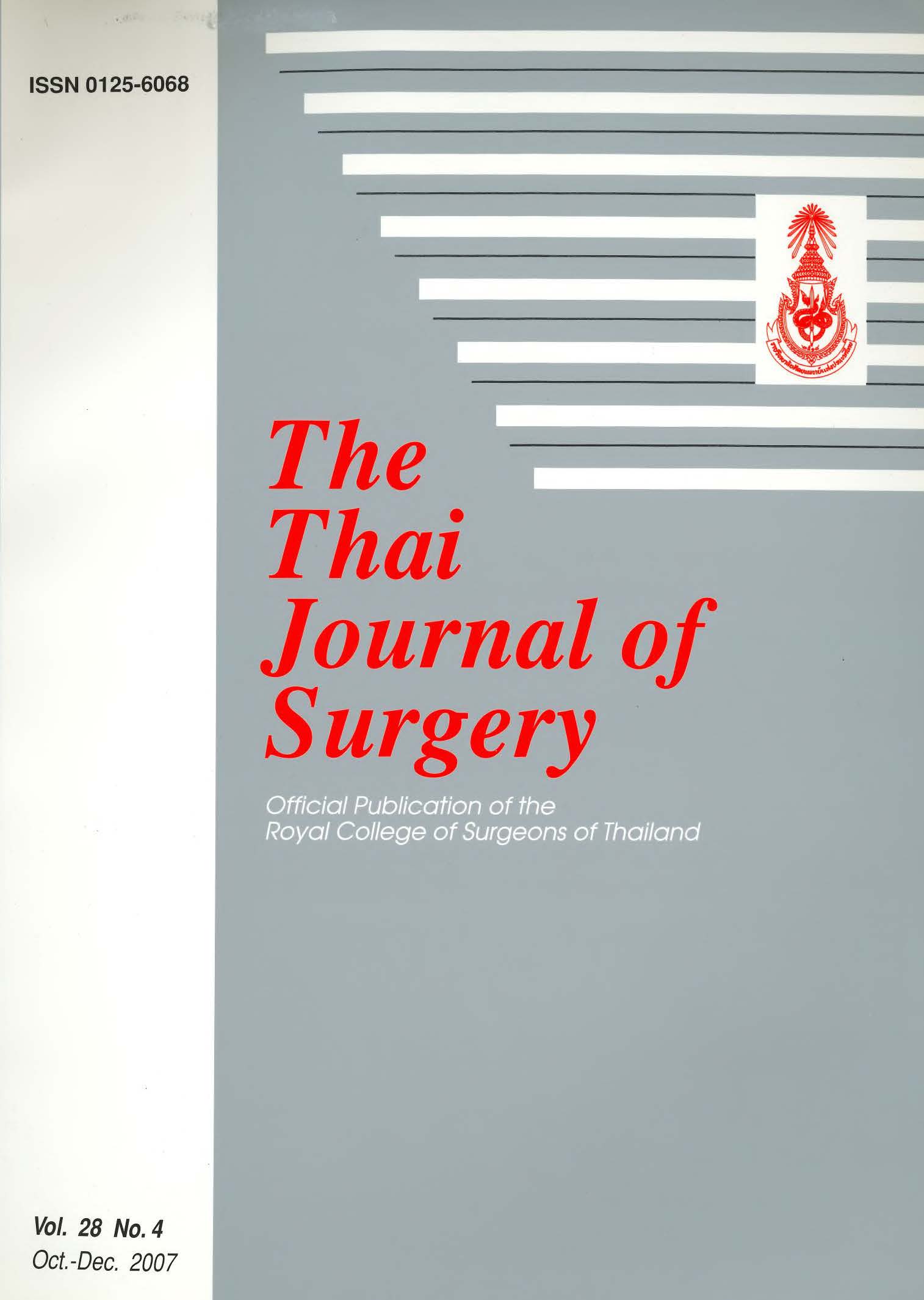Suction Ligator: An Instrument for Rubber Band Ligation
Abstract
Introduction: Internal hemorrhoid is a common problem in surgical practice. Rubber band ligation usually is recommended for grade II and II internal hemorrhoid and is claimed to be the most effective treatment. Barron's ligator is the instrument of choice; however, one may encounter some problems. Firstly, with improper equipment resulting in poor visualization, to grasp the hemorrhoid at a proper position in the first grasping may not be easy. Secondly, when the hemorrhoid is a large one, the ligator's cup may not cover the entire lesion and thus may render recurrence of the disease. To solve these problems, a suction ligator is designed and developed.
Materials and Methods: The suction ligator composes of 3 parts: loading part, ligating part and handling part. The loading part is a cone-shape piece, used for loading a rubber band. The ligating part is a two-cylindrical tube, inner and outer tube which fit together. The inner tube acts as a sucker that sucks and fixes the hemorrhoid while the outer tube acts as a pusher that pushes and lodges the rubber band. The handling part is a metal tube designed as a handle. It connects the ligating part with a suction unit.
Results: Suction ligator was successfully applied in 40 out-patients with grade II and III internal hemorrhoid during May 2003 and June 2006 without complications. All patients were satisfied with the results.
Conclusions: Suction ligator offers a clear visualization of the hemorrhoid before banding, and thus makes a precise banding. With multisize ligating parts, the instrument can be applied to hemorrhoid of all sizes, small or large. The instrument is modified from cheap basic medical supplies that are readily available in all hospitals.
References
2. Mosegaard F, Nielsen MC, Hansen JB, Knudsen JT. High fiber diet reduces bleeding and pain in patients with hemorrhoids. Dis Colon Rectum 1982; 25: 454-6.
3. Thanapongsathorn W, Vajarabukka T. Clinical trial of oral Diosmin (Daflon) in the treatment of hemorrhoids. Dis Colon Rectum 1992; 35:1085-8.
4. Mirsa MC, Parshad R, Randomized clinical trial of micronized flavonoids in the early control of bleeding from acute internal hemorrhoids, Br J Surg 2000; 87: 868-72.
5. Chaloeykitti B. Hemorrhoids. In: Chaloeykitti B, editor. Surgery of colon and rectum. Bangkok: Rungsilp Printing; 2002. p. 111-3.
6. Thaweechaikarn P. Hemorrhoid. In: Thaweechaikarn P, editor. Hemorrhoid, Bangkok: Amarin Printing and Publishing; 2001. p. 62-72.
7. Rojanasakul A, Current practice of hemorrhoid. In: Siriwongs P, Charoensethamaha S, Thaweechaikarn P, editors. Salyasart Wiwat 32nd. Bangkok: Bangkok Medical Publisher; 2006. p. 114-5.
8. Jeffrey WM. Hemorrhoidal disease. In: David EB, Steven DW, editors. Fundamentals of Anorectal Surgery. New York: McGraw-Hill, Inc.; 1992. p. 198
9. Blaisdell PC. Prevention of massive hemorrhage secondary to hemorrhoidectomy. Surg Gynecol Obstet 1958; 106:485-8
10. Barron J. Office ligation treatment of hemorrhoids. Dis Colon Rectum 1963; 6: 109-13.
Downloads
Published
How to Cite
Issue
Section
License
Articles must be contributed solely to The Thai Journal of Surgery and when published become the property of the Royal College of Surgeons of Thailand. The Royal College of Surgeons of Thailand reserves copyright on all published materials and such materials may not be reproduced in any form without the written permission.



